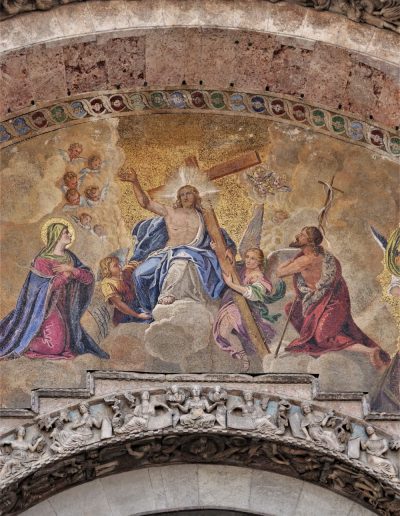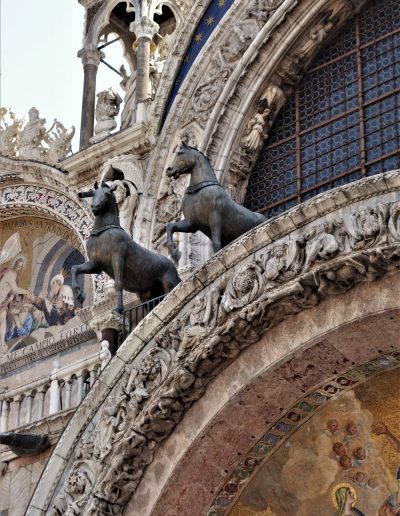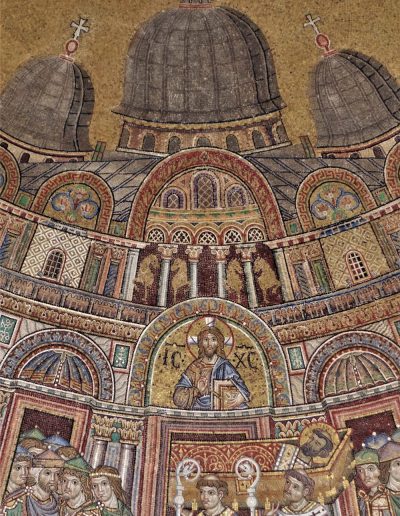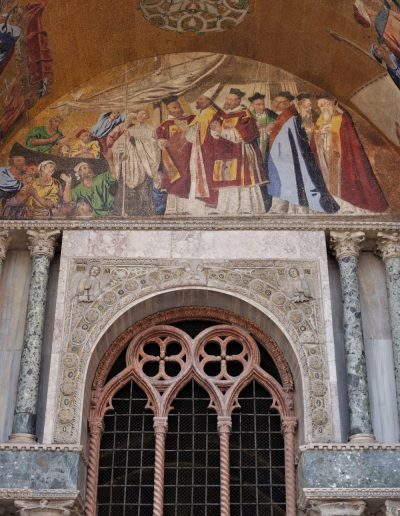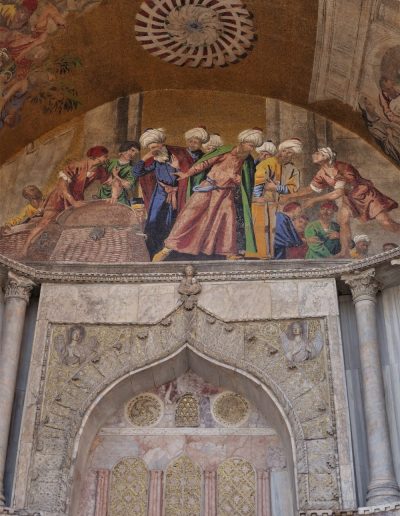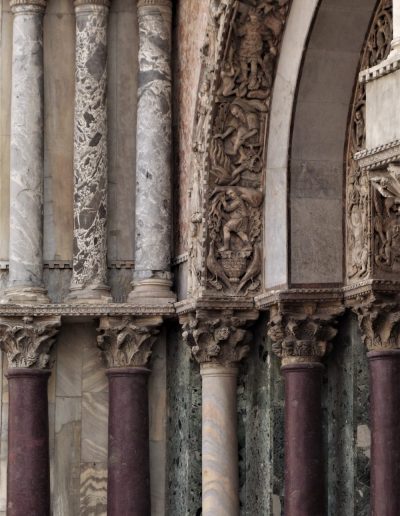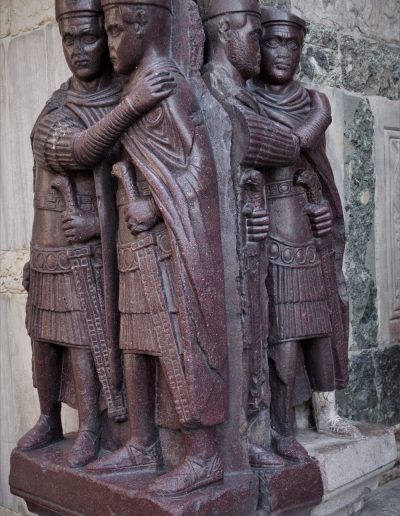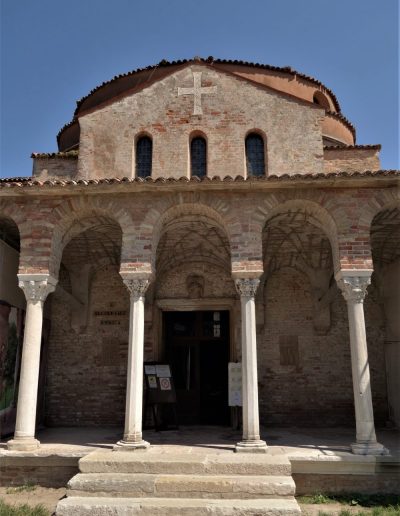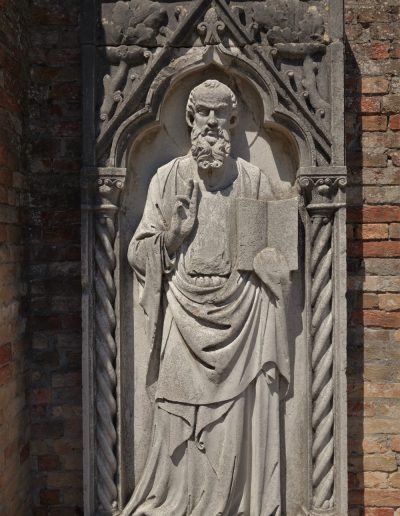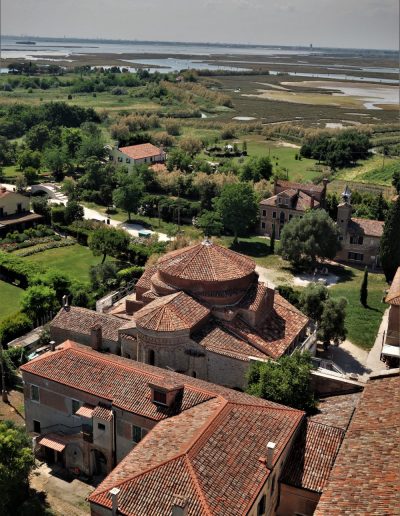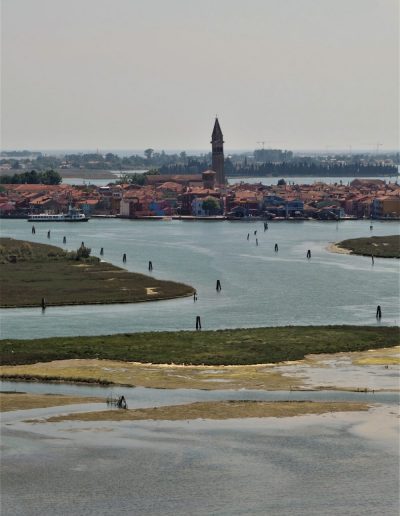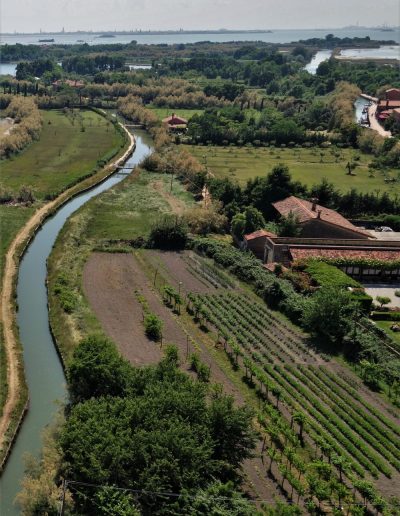- Islands in the Venice lagoon were initially occupied by Veneti, a Celtic tribe living in the Po valley region and allied to the Roman Empire. They had to flee waves of Barbarian invasion as the Roman Empire fell and lagoon islands provided places of refuge. Invading Visigoths then Ostrogoths settled in nearby Ravenna and the lagoon island communities became permanent as the invaders weren’t going away.
- Initially they occupied the island of Torcello, spred out to surrounding islands, then occupied the ‘high bank’ (rivoalto) which is the Rialto of modern Venice. These island communities eventually formed a federation and Venice the republic is said to have been founded around 421.
- The eastern Emperor Justinian the Great made Ravenna (140 kms south of Venice) his base for reconquering Italy and reuniting the eastern and western empires. His efforts did not however succeed. The Lombards began a next wave of northern invasion, and island communities in the Venice lagoon grew larger and more established in response to this latest pressure. In 726 the first Doge of Venice was elected and a 1,000 year history began. The Franks followed the Lombards as invaders though their attempts to invade the Venetian islands were unsuccessful. By 810 the Venetian lagoon was the only part of northern Italy still in the Byzantine sphere of influence, and the Venetians were using their seafaring skills to establish a powerful trading base in the Adriatic and beyond. In 828, informed by an earlier prophesy, the body of Saint Mark the Evangelist was smuggled from Alexandria to Venice and the Basilica of San Marco was established. Saint Mark was symbolised in Saint John’s Book of Revelation as a winged lion and this symbol became synonomous with the Republic of Venice.
- By the 10th C Ravenna’s port (Classe) had silted up and the city was in decline to the advantage of Venice with its access to the Adriatic. Up to the First Crusade in 1095 Venetian Doges used their diplomatic skills to trade with both the Byzantine Empire in the east and the Holy Roman Empire in the west. Venetian involvement in the First Crusade, although minor, soured relations with the Byzantines and things didn’t get better from there. Venice was a major player in the Fourth Crusade of 1203 under Doge Enrico Dandolo, and part of his price for involvement of the Venetian fleet was a detour to Constantinople where the Crusaders sacked the city and Venice took three eights of the spoils.
- Standing in St Mark’s Square and looking at the Basilica of San Marco, Venice feels like the closest thing we have to a living Byzantine city. That iconic view is much more interesting when you understand how it was influenced, what it imitates, and the fact that some of what you see was literally looted from Constantinople.
- The island of Torcello is another great place to evoke Byzantine Venice. The Byzantine Cathedral of Santa Maria Assunta was built in the 7th C and is the oldest in the region. Climbing its bell tower and looking out over the lagoon you get some sense of what the fleeing Veneti had to deal with in establishing a safe home in the lagoon. Somehow they managed to turn this precarious existence into an empire.
- (N.B. Photos not allowed inside the Basilica of San Marco or the Cathedral of Santa Maria Assunta.)

